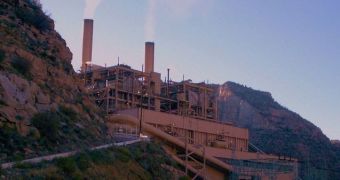Although authorities around the world are fighting to reduce carbon emissions, and to switch to greener methods of producing electrical current, it's highly unlikely that this will happen anytime soon. This is one of the main reasons why the Massachusetts Institute of Technology (MIT) Ronald C. Crane Professor of Mechanical Engineering Ahmed Ghoniem is leading an effort to devise a new method of capturing carbon before it leaves the smokestacks. The technique has already proven its worth, its creators say, quoted by MIT News.
Carbon capture and storage (CCS) technologies exist today, but they are prohibitively expensive, and still fairly new. This is why only a handful of plants have tried to use them, with mixed results. The MIT team says that its new method, called pressurized oxy-fuel combustion, is able to fully separate carbon dioxide (CO2), the main greenhouse gas held responsible for global warming, from other emitted substances. The chemical is then transformed into a concentrated, pressurized liquid stream. This liquid can then be easily injected deep underground, so that it cannot escape into the atmosphere.
The method gains new importance when considering the fact that emissions from fossil fuels are still on the rise, and will continue to increase in importance. Estimates say that the use of coal, natural gas and oil will increase by as much as 50 percent by 2030. Additionally, 90 percent of the world's energy is obtained from non-renewable sources. Therefore, finding effective and cheap methods of storing CO2 is a very important goal in science today, if global-warming mitigation is to succeed. “This is the first step. Before you sequester, you have to concentrate and pressurize. You have to redesign the power plant so that it produces a pure stream of pressurized liquid carbon dioxide, to make it sequestration ready,” Ghoniem explains.
The new study was funded by Italian company ENEL, which plans to incorporate pressurized oxy-fuel combustion into a pilot test plant, planned for construction in the next couple of years. Details of the method appear in the August issue of the respected scientific journal Energy. Ghoniem says that it's very tricky to find a method of making CCS work. Generally, these systems require a lot of energy, meaning that the plant needs to burn more fuel in order to produce the same amount of power it would produce without CCS systems. And this makes the very point of having the technology useless.
“CCS is still an emerging technology. It has the potential to substantially reduce CO2 emissions from coal plants, but it also faces many challenges,” a report from the Union of Concerned Scientists, called “Coal Power in a Warming World,” said last year.

 14 DAY TRIAL //
14 DAY TRIAL //